Install#
Base Install Limitations
The base pip install does not guarantee all functionality and/or examples are operational due to optional dependencies. We encourage users that face package issues to familiarize themselves with the optional model installs and suggested environment set up for the most complete experience.
Install using Pip#
To get the latest release of Earth2Studio, install from the Python index:
pip install earth2studio
Install using uv (recommended)#
This package is developed using uv and it’s recommended that users use an uv project for the best install experience:
mkdir earth2studio-project && cd earth2studio-project
uv init --python=3.12
uv add "earth2studio @ git+https://github.com/NVIDIA/earth2studio.git@0.10.0"
uv Install
The use of the latest git release tag for the package install with uv is intentional. This will allow uv to handle any complicated dependency conditions and automatically handle url based dependencies. This is not achievable using the pypi registry but makes installing optional packages much easier down the line.
Install Main Branch#
To install the latest main branch version of Earth2Studio:
pip install hatchling # Optional if install process builds the wheel
pip install "earth2studio @ git+https://github.com/NVIDIA/earth2studio"
or if you are using uv:
uv add "earth2studio @ git+https://github.com/NVIDIA/earth2studio.git"
Verify Installation#
python
# or when using uv
uv run python
>>> import earth2studio
>>> earth2studio.__version__
Optional Dependencies#
uv Package Manager
For developers uv package manager should be used. uv is not required for just using Earth2Studio thus both pip and uv commands are included. uv commands assume Earth2Studio has already been added to the project using git source used in the above sections.
Suggested prerequisites
Installing the base package before attempting any optional dependency groups is recommended if using pip.
uv commands assume Earth2Studio has already been added to the project with the git link used in the above sections.
Model Dependencies#
Models typically require additional dependencies which are not installed by default. Use the optional install commands to add these dependencies.
Prognostics#
Notes: The AIFS model requires additional dependencies for data processing and visualization. This includes the use of flash-attention which can take a long time to build on some systems. See the troubleshooting docs for known suggestions/fixes related to this install process.
pip install earth2studio[aifs] --no-build-isolation
uv add earth2studio --extra aifs
Notes: The AIFS Ensemble model relies on updated ECMWF checkpoints with ensemble sampling support. Similar to the deterministic AIFS variant this extra depends on flash-attention, which can take a long time to compile. See the troubleshooting docs for compilation tips.
pip install earth2studio[aifsens] --no-build-isolation
uv add earth2studio --extra aifsens
Notes: The Aurora model relies on the microsoft aurora package for inference.
pip install earth2studio[aurora]
uv add earth2studio --extra aurora
pip install earth2studio[dlwp]
uv add earth2studio --extra dlwp
Notes: For all DLESyM models, Earth2Grid needs to be installed manually.
pip install --no-build-isolation "earth2grid @ git+https://github.com/NVlabs/earth2grid@661445e2c68edc76f52632aa0528af482357f1b8"
pip install earth2studio[dlesym]
uv add earth2studio --extra dlesym
pip install earth2studio[fcn]
uv add earth2studio --extra fcn
Notes: Recommended to install torch-harmonics with CUDA extensions for best performance which can take a long time to build on some systems. See the troubleshooting docs for known suggestions/fixes related to this install process.
export FORCE_CUDA_EXTENSION=1
pip install --no-build-isolation torch-harmonics==0.8.0
pip install "makani @ git+https://github.com/NVIDIA/modulus-makani.git@28f38e3e929ed1303476518552c64673bbd6f722"
pip install earth2studio[fcn3]
export FORCE_CUDA_EXTENSION=1
uv add torch-harmonics==0.8.0 --no-build-isolation
uv add earth2studio --extra fcn3
Notes: Requires ONNX GPU Runtime. May need manual install depending on CUDA and Python version.
pip install earth2studio[fengwu]
uv add earth2studio --extra fengwu
Notes: Requires ONNX GPU Runtime. May need manual install depending on CUDA version.
pip install earth2studio[fuxi]
uv add earth2studio --extra fuxi
Notes: The GraphCast models (operational and small) require additional dependencies for JAX and Haiku.
pip install earth2studio[graphcast]
uv add earth2studio --extra graphcast
Notes: Requires ONNX GPU Runtime. May need manual install depending on CUDA version.
pip install earth2studio[pangu]
uv add earth2studio --extra pangu
Notes: Requires Modulus-Makani to be installed manually.
pip install "makani @ git+https://github.com/NVIDIA/modulus-makani.git@28f38e3e929ed1303476518552c64673bbd6f722"
pip install earth2studio[sfno]
uv add earth2studio --extra sfno
pip install earth2studio[stormcast]
uv add earth2studio --extra stormcast
Notes: Requires a base prognostic model to be installed.
pip install earth2studio[interp-modafno]
uv add earth2studio --extra interp-modafno
Diagnostics#
Notes: Additional dependencies needed for CBottle3D data source, CBottle video prognostic, CBottleInfill diagnostic and CBottleSR diagnostic.
pip install hatchling
pip install --no-build-isolation "earth2grid @ git+https://github.com/NVlabs/earth2grid@661445e2c68edc76f52632aa0528af482357f1b8"
pip install --no-build-isolation "cbottle @ git+https://github.com/NickGeneva/cBottle.git@9250793894f8a9963f6968d62112884869fde3e1"
pip install earth2studio[cbottle]
uv add earth2studio --extra cbottle
Notes: No additional dependencies are needed for ClimateNet but included for completeness.
pip install earth2studio[climatenet]
uv add earth2studio --extra climatenet
Notes: Additional dependencies for all CorrDiff models.
pip install earth2studio[corrdiff]
uv add earth2studio --extra corrdiff
Notes: Additional dependencies for all cyclone tracking models. Only Python 3.12 and below support.
uv pip install earth2studio --extra cyclone
pip install earth2studio[cyclone]
Notes: Additional dependencies for all derived diagnostic models. No additional dependencies are needed for the derived models at the moment but included for completeness.
pip install earth2studio[derived]
uv add earth2studio --extra derived
pip install earth2studio[precip-afno]
uv add earth2studio --extra precip-afno
Notes: Improved version of the Precipitation AFNO model with enhanced accuracy.
pip install earth2studio[precip-afno-v2]
uv add earth2studio --extra precip-afno-v2
Notes: Requires physicsnemo package for zenith angle calculations.
pip install earth2studio[solarradiation-afno]
uv add earth2studio --extra solarradiation-afno
pip install earth2studio[windgust-afno]
uv add earth2studio --extra windgust-afno
Submodule Dependencies#
A few features in various submodules require some specific dependencies that have been deemed too specific to warrant an addition to the core dependencies. These can be installed with a submodule wide install group:
pip install earth2studio[data]
uv add earth2studio --extra data
pip install earth2studio[perturbation]
uv add earth2studio --extra perturbation
pip install earth2studio[statistics]
uv add earth2studio --extra statistics
Install All Optional Dependencies#
In Earth2Studio, it’s recommended that users pick and choose the optional dependencies that are needed for their use case. Installing everything at once and for all models is only expected to work in a few specific environments and may not include support for every model depending on conflicts. This is only supported using uv and when using github as the source, not pypi registry. To install a best effort all optional dependencies group, use the following:
uv sync
uv add earth2studio --extra all
Environments#
For the best experience, we recommend creating a fresh environment whether that be using uv, a Docker container or even a Conda environment. Below are some recipes for creating a handful of environments for setting up Earth2Studio in an isolated environment. For developer environments, please refer to the Overview.
uv Project#
Using uv is the recommended way to set up a local Python environment for Earth2Studio. Assuming uv is installed, use the following commands:
mkdir earth2studio-project && cd earth2studio-project
uv init --python=3.12
uv add "earth2studio @ git+https://github.com/NVIDIA/earth2studio.git@0.10.0"
or if you are already inside an existing uv project:
uv venv --python=3.12
uv add "earth2studio @ git+https://github.com/NVIDIA/earth2studio.git@0.10.0"
PyTorch Docker Container#
For a docker environment the Nvidia PyTorch container provides a good base with many dependencies already installed and optimized for NVIDIA hardware. In container instances, using a virtual environment is often not necessary. It is recommended to use the following commands to install using the container’s Python interpreter:
docker run -it -t nvcr.io/nvidia/pytorch:25.05-py3
>>> apt-get update && apt-get install -y git make curl && rm -rf /var/lib/apt/lists/*
>>> unset PIP_CONSTRAINT
>>> curl -LsSf https://astral.sh/uv/install.sh | sh && source $HOME/.local/bin/env
>>> uv pip install --system --break-system-packages "earth2studio@git+https://github.com/NVIDIA/earth2studio.git@0.10.0"
Extra Dependencies
To add extra dependencies adjust the uv pip install command like you would normally
do with pip e.g.
uv pip install --system \
--break-system-packages \
"earth2studio[all]@git+https://github.com/NVIDIA/earth2studio.git@0.10.0"
Custom Container#
For a dedicated docker container the following can be used to get started. There is some complexity to undo the pip constraints from the PyTorch container, but otherwise the install process is the same.
FROM nvcr.io/nvidia/pytorch:25.05-py3
COPY --from=ghcr.io/astral-sh/uv:0.6.13 /uv /uvx /bin/
# Install system dependencies
RUN apt-get update && apt-get install -y \
make \
curl \
&& rm -rf /var/lib/apt/lists/*
WORKDIR /app
# Disable constraint files in the container
ENV PIP_CONSTRAINT=
# Install Earth2Studio and dependencies
RUN uv pip install --system --break-system-packages "earth2studio@git+https://github.com/NVIDIA/earth2studio.git@0.10.0"
Conda Environment#
It is no longer recommended to use any conda environment manager for Earth2Studio in favor of uv if possible. This is because the virtual environments set up by uv makes the system-wide conda environments not needed unless some system dependencies are required. However this demonstrates that in principle Earth2Studio can be installed using standard package tooling.
conda create -n earth2studio python=3.12
conda activate earth2studio
uv pip install --system --break-system-packages "earth2studio@git+https://github.com/NVIDIA/earth2studio.git@0.10.0"
System Recommendations#
Software#
Earth2Studio does not have any specific software version requirements. The following are recommended to closely match development and automation environments, minimizing the chance for unexpected incompatibilities:
OS: Ubuntu 24.04 LTS
Python Version: 3.12
CUDA Version: 12.8
Hardware#
Earth2Studio does not have any specific hardware requirements, if PyTorch can run then many features of Earth2Studio should run as well. However, most models do require a GPU with sufficient memory and compute score to run without complications. The recommended hardware for the majority of models supported in Earth2Studio is:
GPU |
GPU Memory (GB) |
Precision |
# of GPUs |
Disk Space (GB) |
|---|---|---|---|---|
NVIDIA GPU with compute capability ≥ 8.9 |
≥40 |
FP32 |
1 |
128 |
This includes cards such as:
L40S
RTX A6000
H100
B200
We encourage users to experiment on different hardware for their specific needs and use case.
Configuration#
Earth2Studio uses a few environment variables to configure various parts of the package. The important ones are:
EARTH2STUDIO_CACHE: The location of the cache used for Earth2Studio. This is a file path where things like models and cached data from data sources will be stored.EARTH2STUDIO_PACKAGE_TIMEOUT: The max number of seconds for a download operation of a model package file from a remote store such as NGC, Huggingface or S3.EARTH2STUDIO_DISABLE_MSC: Can be used to disable use of the multi-storage client for relevant data sources.

